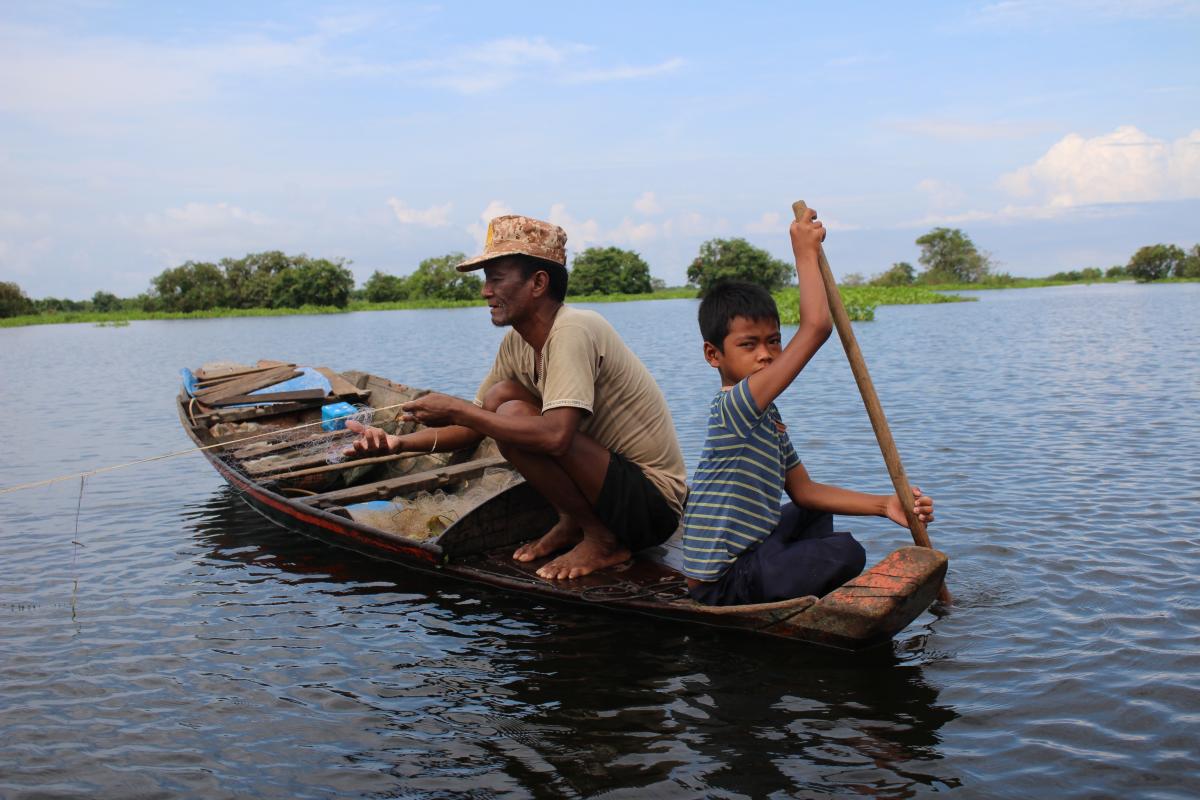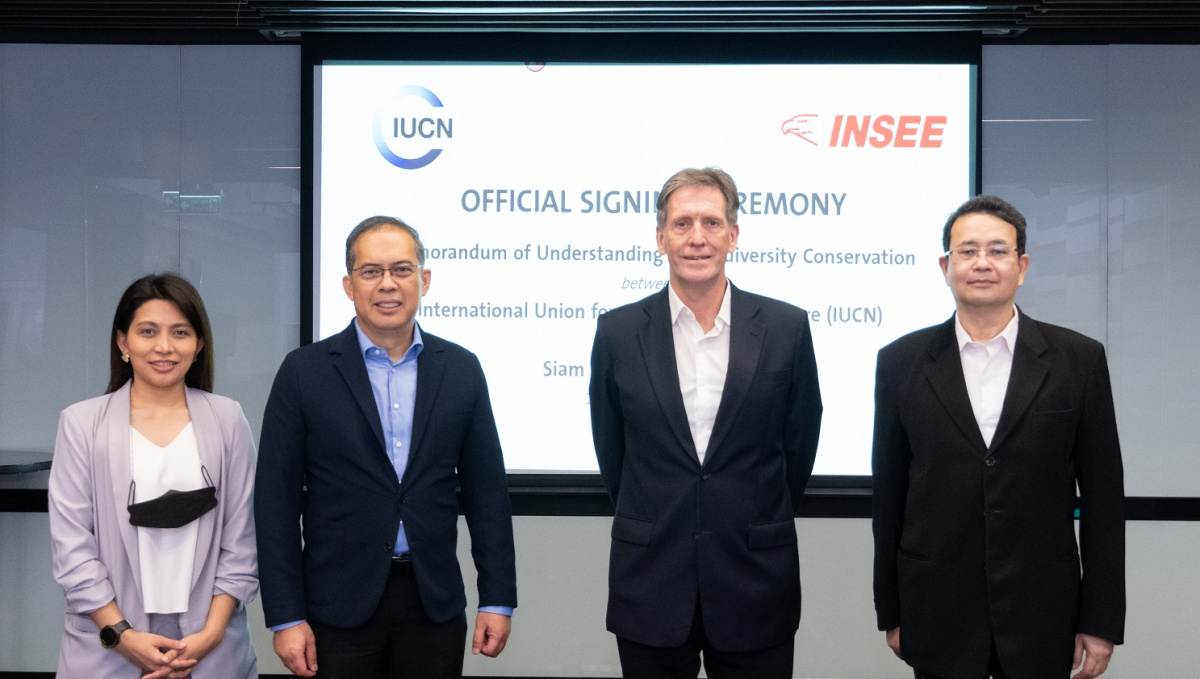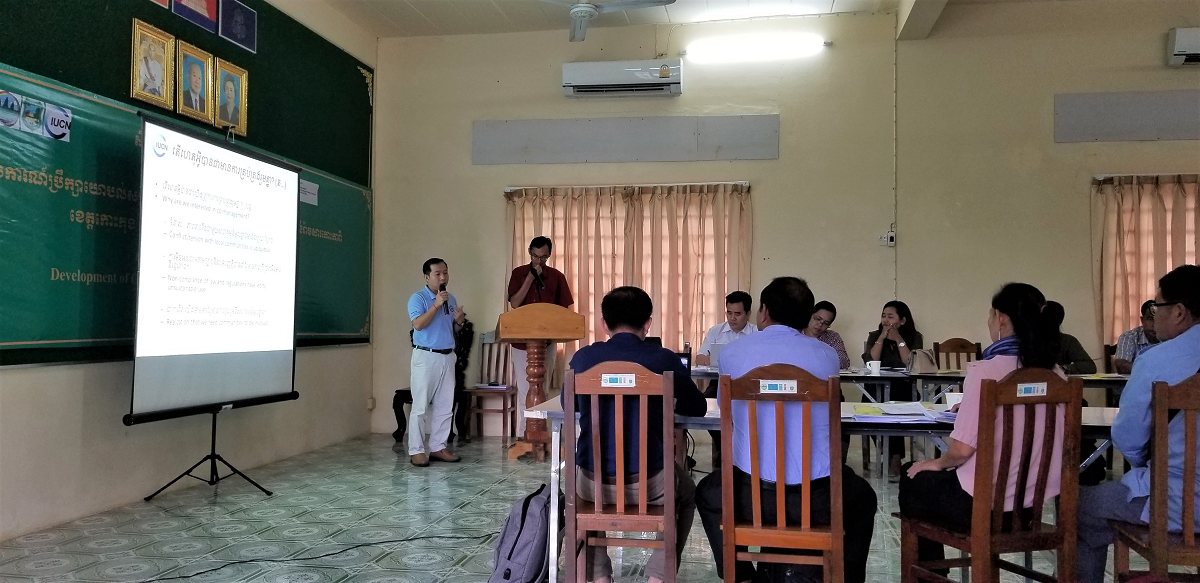Blog: Sustainable financing of a Fish Conservation Area in Beoung Periang
In December 2015, as part of a workshop on sustainable financing of fish conservation areas (FCAs), I visited a deep lake in the Tonle Sap called Beoung Periang, located in Chreav commune about 12 km from Siem Reap. The workshop was organised by the Fisheries Action Coalition Team (FACT) and IUCN as part of the EU-funded project Strengthening Capacity of Fishing Communities in the Tonle Sap to Manage their Natural Resources Sustainably.
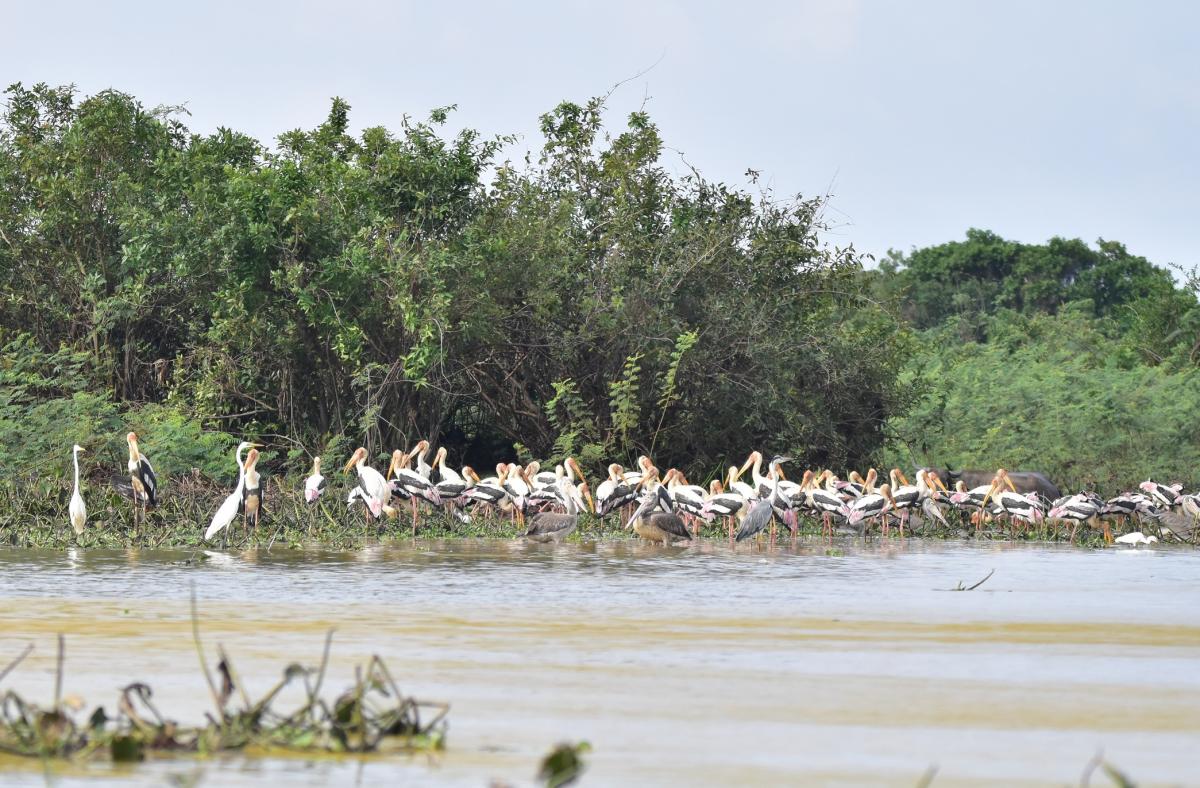
Photo: Beoung Periang birds: Spot billed pelicans and painted storks / David Moore, IUCN
The Beoung Periang community told us about their experience managing a FCA that was set up with ADB funding and the difficulties they faced after funding ended in 2009. This terminated community protection activities, leaving fish and bird populations vulnerable to overfishing and hunting. When I visited in December, it was clear that the community was aware of the benefits of the FCA and was committed to finding ways to reinstate conservation management.
At the sustainable financing workshop, Beoung Periang community members networked with other participants facing similar challenges and learned about how some communities had developed ecotourism to raise money to finance conservation. Their belief in the lake’s ecotourism potential as a way to generate income was reinforced by many other participants.
In May 2016, I went bird watching on the Tonle Sap with Osmose, a local NGO that has received funding from the IUCN-led Critical Ecosystem Partnership Fund (CEPF) to develop community based tourism and conservation in the Prek Toal Ramsar site on the Tonle Sap. Because Prek Toal was inaccessible due to unusually low water levels, our guide, Ke Sovann, suggested that we visit Beoung Periang instead.
After a short journey through rice fields and flooded shrublands, we reached the edge of Beoung Periang where we found a small camp beneath a regenerating flooded forest canopy. We were introduced to Duth Dam, a FCA committee member.
Dam explained that in the six months after the workshop, community protection of Beoung Periang was reinvigorated. A roster system requires villagers from nearby Choung Khneas commune to spend four days each month protecting the lake from illegal hunting and fishing. The small lake-side camp is the base for these patrols. In return, the community rangers can catch enough fish for their family consumption, and can earn money by providing boat services to mostly Khmer tourists visiting from Siem Reap. To encourage visitors, they had improved the track to the edge of Beoung Periang to allow car access. While we were there, several groups of Khmer tourists were picnicking by the lake and going on boat trips to see the birds.
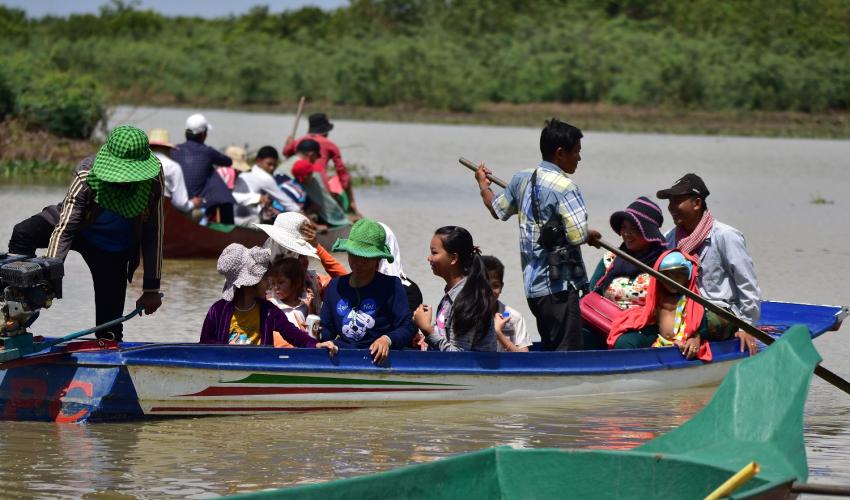 Photo: Khmer tourists in Beoung Periang / David Moore, IUCN
Photo: Khmer tourists in Beoung Periang / David Moore, IUCN
We went bird watching around Beoung Periang, visiting the mature flooded forest. Although Ke Sovann was worried that many birds had dispersed following the recent rains, the importance of Beoung Periang was clear as we saw all but one of the most threatened iconic water birds of the Tonle Sap: milky stork, painted stork, lesser adjutant, Oriental darter, black-headed Ibis, and grey-headed fish eagle. Our visit concluded with an excellent presentation by Ke Sovann on bird conservation in the Tonle Sap and how the hydrology, ecosystems, and communities are all connected.
This story of community recovery indicates the influence of the EU project, particularly how it has emphasised the importance of sustainable financing mechanisms and the role that ecotourism can play in a diversified portfolio of funding sources.
A locked donation box was set up next to the camp following the model of the community at Sdey Krom Rohal Soung near Battambang, which Beoung Periang community members had visited as part of the December 2015 workshop.
In addition, new signage identifying the FCA had been erected next to the camp. This had been funded by FACT with funding from Forum-Syd, evidence of new relationships that the project has fostered.
This blog post was contributed by David Moore, M&E specialist, IUCN.
